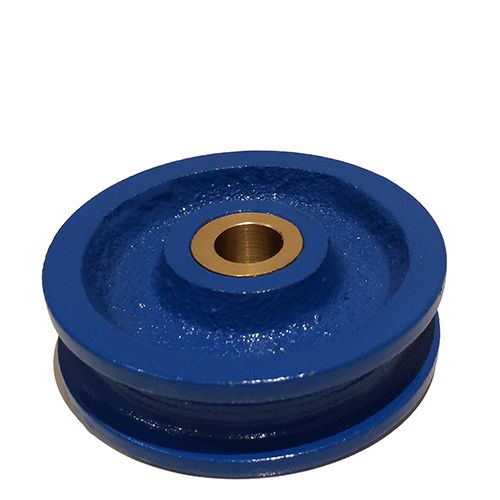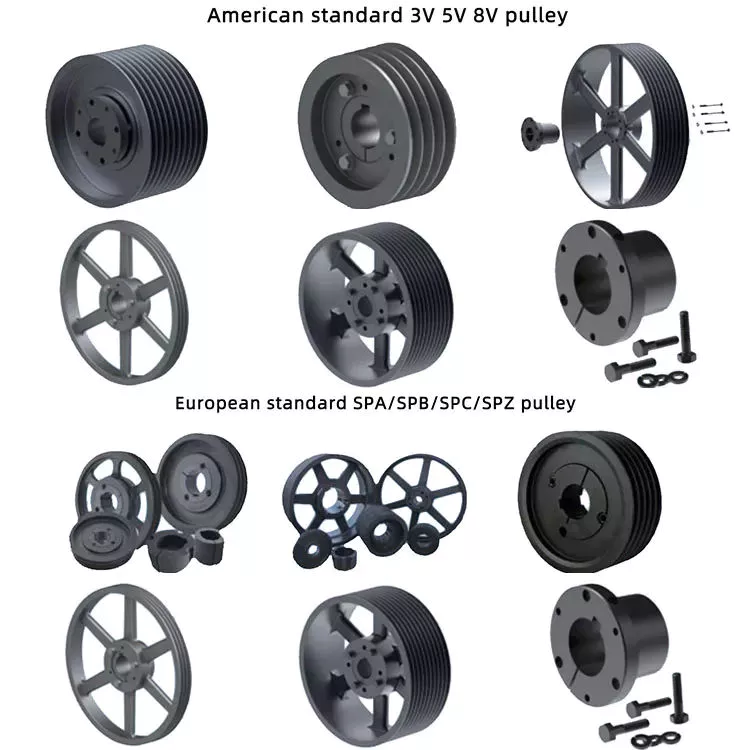Product Description
| Product Description | |
| Products name : | OEM service Customized CNC Machining Turned Parts.Custom high performance metal parts by CNC machining.OEM Precision CNC Machining & Turning titaniun Parts by drwaing 3D.CNC Grinding Machining Xihu (West Lake) Dis. Pin Machinery Spare Parts.OEM custom CNC machined turning Anodized aluminum alloy Bicycle Parts.OEM customized Aluminum Parts CNC Machining Service.Customized CNC Machining Aluminum Anodizing Belt Wheel Groove Hub Pulley |
| Material : | Aluminum alloy 6061. 6063. 7075 .5082 and etc . steel alloy /stainless steel , titanium , brass/ copper , plastics and so on |
| Surface treatment : | painting , coating , oxide , anodized , powder coating , or according customer require |
| MOQ : | 10pcs |
| samples : | first will do samples send to customer test , after confirmed quality is ok , then do production |
| Package : | each parts will use foam pack , outer is wood box or pallet , strong package guarantee products no any damage ,injured during transportaion way. |
| Services : | customized , OEM/ODM service . machining service |
| Application : | automotive spare parts , motorcycle parts , machine , electronic spare parts etc |
| Market : | North American , european, middle east, african , Canada, Englad and so on |
Products show :
Package :
Our company :
About Us :
Integrated precision CNC machining solutions supplier
As an OEM /ODM manufacturer ,quality and service are our hallmark . Especially your project
Requires high accurate and surface treatment .
Our services is capable of handling larger quantity custom components in a range of
CNC machining. Milling ,turning ,die-casting ,sheet metal stamping etc
These CNC deep processing products active in automotive ,telecommunication devices,
electronic, industrial machinery , medical, aerospace ……..
We are always customers trustworthy and reliable partner and supported
FAQ
Q: Are you trading company or manufacturer ?
A: We are factory.
Q: How long is your delivery time?
A: Generally it is 10-15 days . or it is 15-20 days if the
quantity is larger
Q: Do you provide samples ? is it free or extra ?
A: Yes, we could offer the sample for free charge but do not pay the cost of
express shipping fee
Q: What is your terms of payment ?
A: Payment=1000USD, 30% T/T in
advance ,balance before shippment.
If you have another question, pls feel free to contact us as below:
Contact Information :
web:HangZhouderf
pls contact us freely
OEM /ODM service CNC Machining aluminum bicycle Parts
CNC machining racing parts and other automotive accessories parts
5 axis cnc machining cheap cnc milling machine spare parts. Aluminum Racing Parts CNC Milling machined Automotive Components
aluminum stainless steel titanium Custom CNC Performance Parts
CNC Machining auto Part with Aluminum / Brass/ Stainless Steel/titanium
OEM Service Precision CNC Machining Aluminum Automotive Parts
OEM CNC Machining Stainless Steel Auto Spare Parts
Tight Tolerance CNC Milling aluminum /steel alloy Automotive Parts
OEM custom CNC machined turning Anodized aluminum alloy Bicycle Parts
/* January 22, 2571 19:08:37 */!function(){function s(e,r){var a,o={};try{e&&e.split(“,”).forEach(function(e,t){e&&(a=e.match(/(.*?):(.*)$/))&&1
| Condition: | New |
|---|---|
| Certification: | RoHS, ISO9001 |
| Standard: | DIN, ASTM, GOST, ANSI |
| Customized: | Customized |
| Material: | Alloy |
| Application: | Metal Recycling Machine, Metal Straightening Machinery, Metal Spinning Machinery, Metal Processing Machinery Parts |
| Samples: |
US$ 5/Piece
1 Piece(Min.Order) | |
|---|
| Customization: |
Available
| Customized Request |
|---|

Can wheel pulleys be part of fitness equipment like treadmills and stationary bikes?
Yes, wheel pulleys can indeed be part of fitness equipment such as treadmills and stationary bikes. Here’s a detailed explanation:
1. Treadmills:
In treadmills, wheel pulleys are commonly used to drive the movement of the running belt. The motor of the treadmill is connected to a large wheel pulley, which transfers power to the running belt through a belt drive system. As the motor rotates the wheel pulley, the belt moves, allowing users to walk, jog, or run on the treadmill. The size and design of the wheel pulley, along with the tension of the belt, can affect the speed and smoothness of the treadmill’s operation.
2. Stationary Bikes:
Wheel pulleys can also be found in stationary bikes, particularly in the flywheel assembly. The flywheel, connected to the pedals, provides resistance and momentum during cycling exercises. Wheel pulleys are used to transmit power from the pedals to the flywheel, allowing users to pedal against the desired resistance. The size and configuration of the wheel pulley in the flywheel assembly can influence the overall feel, resistance levels, and smoothness of the cycling motion.
3. Power Transmission:
Similar to other applications, wheel pulleys in fitness equipment ensure efficient power transmission. They transfer rotational motion from the motor or pedals to the relevant components, such as the running belt in treadmills or the flywheel in stationary bikes. Proper power transmission is crucial for delivering consistent resistance and smooth operation, enhancing the overall exercise experience.
4. Belt Tension and Alignment:
Wheel pulleys in fitness equipment contribute to the tension and alignment of belts. Treadmills and stationary bikes often utilize belt-driven systems, where wheel pulleys help maintain the appropriate tension on the belts. Proper tension prevents slippage and ensures the belts remain engaged with the pulleys. Wheel pulleys may also incorporate features like crowned surfaces or tracking guides to aid in belt alignment, minimizing noise and optimizing performance.
5. Customization and Performance:
Wheel pulleys can be customized in fitness equipment to achieve specific performance characteristics. For example, in stationary bikes, adjustable resistance systems can be implemented by using different-sized wheel pulleys or incorporating mechanisms that change the effective diameter of the pulleys. This allows users to adjust the intensity of their workouts and simulate different terrains or cycling conditions.
6. Maintenance and Replacement:
Proper maintenance and timely replacement of wheel pulleys are important in fitness equipment. Regular inspection helps identify any wear, misalignment, or damage to the pulleys or belts, ensuring optimal performance and preventing potential failures. When necessary, damaged or worn wheel pulleys should be replaced to maintain the reliability and functionality of the fitness equipment.
In conclusion, wheel pulleys can be an integral part of fitness equipment like treadmills and stationary bikes. They contribute to power transmission, belt tension, alignment, and overall performance, ensuring smooth and effective workouts for users.
 How do wheel pulleys handle different belt types and sizes?
How do wheel pulleys handle different belt types and sizes?
Wheel pulleys are designed to handle different belt types and sizes by considering various factors that ensure proper belt engagement, tracking, and power transmission. Here’s a detailed explanation:
1. Groove Profile:
The groove profile of the wheel pulley is tailored to match the specific belt type. Different belt types, such as V-belts, flat belts, timing belts, or ribbed belts, have varying cross-sectional shapes and dimensions. The groove profile of the pulley is designed to correspond to the belt’s shape, ensuring a precise fit and proper alignment. This allows for maximum contact between the pulley and the belt, reducing slippage and enhancing power transmission efficiency.
2. Groove Dimensions:
The dimensions of the groove, including its width, depth, and angle, are crucial in accommodating different belt sizes. A wider groove can accommodate wider belts, while a narrower groove is suitable for narrower belts. The depth of the groove ensures that the belt sits securely within the pulley, preventing it from slipping or disengaging. The groove angle is designed to match the belt’s angle or curvature, maintaining proper tracking and preventing lateral movement.
3. Tension and Belt Tracking:
Wheel pulleys play a role in maintaining proper belt tension and tracking. Tensioning mechanisms, such as adjustable pulley positions or tensioners, can be incorporated to ensure the optimal tension for different belt types. Proper tensioning prevents belt slippage and promotes efficient power transfer. Additionally, wheel pulleys can be designed with features like crowned surfaces or tracking guides to aid in belt tracking, keeping the belt centered and aligned within the pulley.
4. Belt Material Compatibility:
Wheel pulleys consider the compatibility of materials between the pulley and the belt. For example, certain belt materials may require specific pulley materials to prevent excessive wear or belt damage. In applications where high temperatures or abrasive environments are involved, pulley materials that can withstand these conditions without compromising the belt’s integrity are selected.
5. Adjustable Designs:
Some wheel pulley systems offer adjustability to accommodate different belt sizes and types. This can be achieved through movable pulley positions, interchangeable pulley inserts, or adjustable tensioning mechanisms. These features allow for flexibility in adapting to various belt configurations, making the system versatile and adaptable.
By considering groove profile, dimensions, tensioning mechanisms, belt material compatibility, and adjustable designs, wheel pulleys can effectively handle different belt types and sizes. This ensures proper belt engagement, reliable power transmission, and optimal performance in a wide range of applications.

How do wheel pulleys handle variations in load capacity and speed?
Wheel pulleys are designed to handle variations in load capacity and speed in power transmission systems. Here’s a detailed explanation of how they handle these variations:
Load Capacity:
1. Pulley Size and Diameter:
Wheel pulleys can be designed with different sizes and diameters to accommodate varying load capacities. Larger pulleys have a greater contact surface area with the belt or rope, distributing the load over a larger area and reducing the stress on the pulley. This allows for the transmission of higher loads without compromising the integrity of the pulley.
2. Material and Construction:
Wheel pulleys are manufactured using materials that offer high strength and durability. Common materials include metals such as steel or cast iron, as well as high-strength plastics. The construction of the pulleys is designed to withstand the anticipated loads without deformation or failure.
3. Bearing and Shaft Design:
The bearings and shafts supporting the wheel pulleys are chosen and designed to handle the expected loads. They are selected based on load capacity, speed, and the specific requirements of the application. High-quality bearings and robust shafts ensure smooth rotation and reliable performance under varying load conditions.
Speed:
1. Pulley Ratio:
Wheel pulleys operate on the principle of pulley ratio, where the speed of the driven pulley is determined by the ratio of the sizes of the driving and driven pulleys. By adjusting the pulley sizes, the speed of the driven pulley can be modified to meet the desired requirements. This allows for variations in speed without the need for complex transmission mechanisms.
2. Belt or Rope Selection:
The selection of the belt or rope used with the wheel pulleys can also influence the speed capabilities. Different types of belts or ropes have varying speed ratings and can handle different operating speeds. By choosing the appropriate belt or rope material and design, the wheel pulleys can effectively handle variations in speed.
3. Pulley Design:
Wheel pulleys are designed to minimize slippage and ensure efficient power transmission at different speeds. The pulley grooves are shaped and dimensioned to match the profile of the belt or rope, maximizing the contact area and grip. This design feature helps maintain consistent power transmission even at varying speeds.
Overall, wheel pulleys handle variations in load capacity and speed through careful design considerations, such as pulley size and diameter, material selection, bearing and shaft design, pulley ratio, belt or rope selection, and pulley design. By incorporating these factors, wheel pulleys provide reliable and efficient power transmission across a range of load and speed conditions.


editor by CX
2024-04-17










